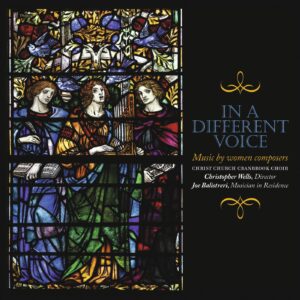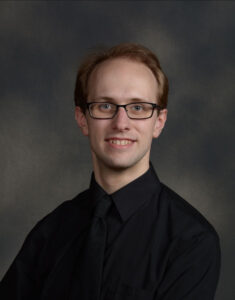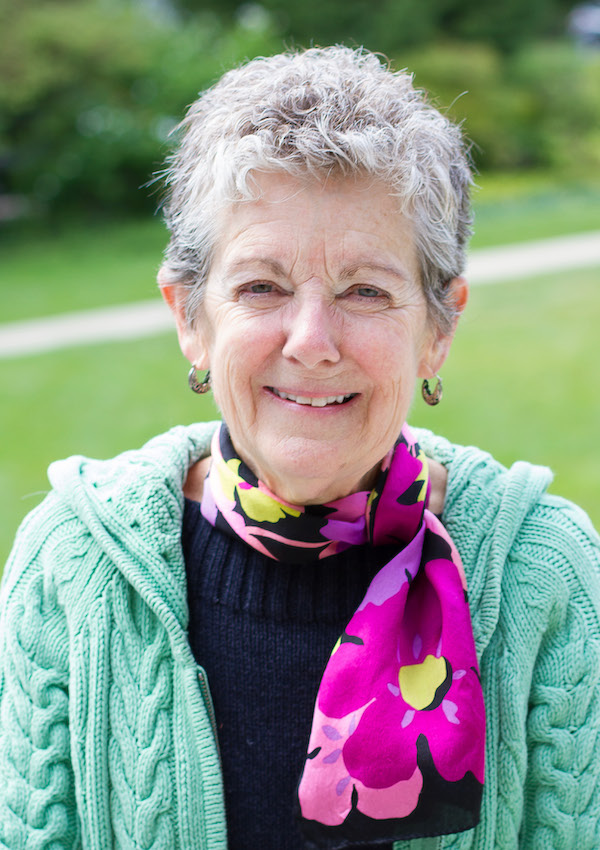Music is central to our worship life. Since the church’s founding in 1928, the music program at Christ Church Cranbrook has enjoyed a strong reputation for excellence throughout Southeastern Michigan, the country, and beyond. Affiliated with the Royal School of Church Music, its choirs strive to lead in prayer, engage worshippers more deeply in liturgy, and deepen our shared lives of faith.
We invite you to learn more about our ensembles on this page, and join us in person or online for one of the many worship services and concerts filled with music!
Rehearsals: Wednesdays @ 7:30 – 9:30 PM | Guild Hall
The Christ Church Choir leads the congregation in singing in addition to offering anthems and psalms at the 10:00 AM service from September through June. They also sing the service of Evensong, feast and fast-day services, concerts, and other special events. The Christ Church Choir is an advanced ensemble that sings a greatly varied repertoire, including a significant amount of standard sacred choral literature from all periods. The Christ Church Choir has completed several summer residencies at UK cathedrals, and released multiple albums, including most recently, In a Different Voice: Music by Women Composers in 2023. Individuals of high school age and older who can read music and have previous choral experience are best suited for this ensemble.
Contact Jonathan Ryan for more information.
The CCC Parish Choir joins the Christ Church Choir several times a year. This ensemble is ideal for people who love to sing in choir but are unable to regularly commit to the Christ Church Choir.
Contact Jonathan Ryan for more information.
Rehearsals: Sundays @ 11:30 AM – Noon
The St. Francis Choir is for children ages 4 to 7. This is a musical enrichment experience in which children learn basic singing and rhythmic skills through varied activities and Bible-based songs. Developing children’s treble singing voices is a major focus of this choir. The St. Francis Choir sings for the 10 AM service several times during the church year. Additionally, the children participate in musical outreach in the local community.
Contact Diana Turner for more information.
Rehearsals: Sundays 11:30 AM – 12:30 PM
Cranbrook Choristers is for children and youth starting in grade 3. Modeled after the English cathedral tradition, choristers receive a high level of musical and vocal training which enables them to sing music at an adult professional level. Through a custom-made curriculum, they receive instruction in reading music, theory, analysis, liturgy, and leadership. Choristers experience numerous benefits from this program beyond music, such as an expanded circle of friends, greater self-confidence, higher academic achievement, and growth in maturity.
Cranbrook Choristers typically sing at the Sunday 10 a.m. service an average of once a month. Choristers enjoy other social activities together as well.
No prior musical or vocal training is necessary for choristers joining in grades 3 or 4. Cranbrook Choristers is open to children and families of any or no religious affiliation.
Contact Jonathan Ryan for more information.
Rehearsals: Wednesdays @ 7 – 8:30 PM | Rooms 201/202
Cranbrook Ringers is a handbell ensemble that rehearses Wednesdays 7-8 p.m. and rings once a month at the 5 p.m. and 10 a.m. weekend liturgies. Anyone with basic music reading skills is welcome to join and learn to play. Handbells offer a great opportunity for those musically inclined but not desiring to sing in an ensemble. This group also provides outreach to other communities outside of church. Periodically, a Handbells Basics workshop is held for those interested in learning more about making beautiful sounds with bells and chimes.
Contact Judy Phillips for more information.
Cranbrook archival documents indicate that, in September 1925, the Skinner Organ Company of Boston, Massachusetts was being considered as the builder for the church’s pipe organ. By October of the same year, the stoplist for a three-manual and pedal organ had been drawn up. During this period, Ernest M. Skinner had engaged the renowned British organ builder, Henry Willis, as consultant in an artistic alliance with his company in England. The original organ, therefore, reflected the influence of this great English organ builder. By December 1925, the stoplist had been agreed upon, and a contract was signed for a three-manual E. M. Skinner organ.
In July 1927, a letter from the Skinner Organ Company responds to a desire from the church to enlarge the organ from a three-manual to a four-manual instrument, adding another department of stops. The addition and enlarged console were contracted for in November 1927. As the back portion of the overly large tower organ chamber had been walled in, another location for this additional new section had to be found. This new Solo section, located in a chamber on the north side of the choir above the working sacristy, “would certainly add tremendously to the effectiveness of the result” stated W. E. Zeuch, Skinner’s second Vice President. The organ of 46 stops over four-manuals and pedal was installed by the end of the year 1927.
Between 1945 and 1955, various proposals from a number of builders in the US and Canada were developed to enlarge the Cranbrook organ. Charles McManis, a small American builder, was chosen for the project. He came to the Cranbrook organ in 1956 when the revival of the neo-classical style of organ-building was in its curious first phase.
Accepting that there were shortcomings with the original Skinner installation – poor placement of the pipework and a deficit of clear, bright upperwork – the resulting McManis revision showed that he was following the trend of the day. In short, ranks of pipes were shuffled from one department to another with only slight improvement of placement, some bright “Baroque” high pitched stops were added, while some of the rich, full-bodied stops were thrown out completely. With an overall reduction in wind pressure, the result was a loss of character and majesty, even though the instrument was increased in size to 69 stops.
By the 1970’s, the original Skinner console had deteriorated to the point where it was deemed essential to replace it. Early in 1992, an Organ and Carillon Renovation Committee was formed to address the many needs for the failing organ. During the summer of 1993, a subcommittee of three committee members, the organ consultant and the two staff musicians, travelled to the east and west coasts to audition representative instruments by the two leading prospective organ builders for the Cranbrook organ project.
Impressed by two superb organs and vast experience restoring, rebuilding, and reconstructing existing and historic instruments, the committee selected British organ builder, N. P. Mander, Limited for the Cranbrook organ project. From the outset, Mander organ builders proposed the preservation and re-instatement of the 1920’s pipework as a basic and important element in reconstruction. They adopted as the general principle for the project a recapturing of the style of the Skinner organ with any additions or alterations being compatible with that style.
The resulting instrument includes more of the original Skinner pipework than the McManis revision of 1955/1956. The 1997 E. M. Skinner/N. P. Mander organ contains 98 stops over six manual divisions and two pedal divisions. All mechanical and electrical components are new. The new four-manual Mander console is constructed in a traditional English style and blends harmoniously with the woodwork and decorative carving of the church.
Behind the decorated organ case, the tower organ, containing the great, swell, choir, solo and pedal divisions, accompanies the congregation in its music for worship and plays the full range of organ repertoire with uncompromised majesty and subtlety. The Chancel organ with two manual divisions and pedal was designed with the accompaniment of choirs and small ensembles of singers and instrumentalists in mind.
Organ Specifications (PDF)
The pipe organ in St. Dunstan’s Chapel was built by Casavant Frères Organbuilders in Saint-Hyacinthe, Quebec, and completed in 2022. It has two mechanical-action keyboards, pedalboard, and contains 11 ranks (sets) of pipes. Because the chapel only seats 50 people, the instrument is relatively small, containing 624 pipes (compared to the 5,433 pipes of the organ in our main Sanctuary). Each pipe was carefully crafted and voiced, one by one, in accordance with the intimate setting of the chapel.
According to correspondence in Cranbrook Archives, the original instrument for the chapel was installed in 1928, but demonstrated mechanical trouble as early as 1935, resulting in a rebuilding project. Subsequent rebuilding attempts were made again in the 1950s and 1990s. The most recent rebuild was deemed unsatisfactory, and the instrument was silent for over a decade.
Installation of the new instrument, Opus 3937, began in March 2020. Several weeks after the organ was delivered to the church, the installation crew had to pause and return to Quebec as Covid-19 Pandemic lockdowns were put in place. The instrument sat, partially complete, until September 2022, when installation and finishing work resumed. The historic carved oak case (and bench) were retained, and the former faux facade pipes were replaced by functioning, hand-burnished 70% tin pipes. The instrument is tuned in fifth-comma meantone temperament.
The St. Dunstan’s Chapel organ supports congregational singing of the Sunday 8:00 a.m. service, along with smaller weddings and funerals held in the chapel. It has been featured in recital, and serves as an important practice and teaching instrument for the parish and the larger community.
Stop List:
Manual I
Manual II
Pedal
A gift of parishioner Virginia Sory Brown in memory of her mother and aunt, the Chamber Organ was built by George Bozeman, Jr. and Company, Organ builders, Deerfield, New Hampshire.
The musical design of the instrument is influenced by mid to late 18th-century English bureau organs and the small chamber organs which George Frederic Handel would have known and played. Mr. Bozeman proposed in particular a design patterned after a chamber organ which Handel used for the first performance of Messiah given in Dublin in 1742. Special attention was given to the design and detail of the organ case. Fashioned upon the Arts and Crafts style of the early 20th-century American master furniture maker, Gustav Stickley, the dark oak paneled case appears to be from the period of the construction of the church (1925-28). The pipe shades seen when the case is opened take their inspiration from detail found throughout the church building which suggest the Art Deco style as found in other Cranbrook buildings.
The organ was dedicated March 9, 1997, when the congregation was worshipping in the Guild Hall during the installation of the E. M. Skinner/N. P. Mander organ.
Stoplist:
The original carillon at Christ Church Cranbrook is comprised of 46 bells from the Taylor Bell Foundry in Loughborough, England. The beautiful instrument was a gift in 1927 to the new church building from Grace Booth Wallace, Harold Lindsey Wallace ,and their children (Elizabeth Ellen,Ellen Virginia, Richard Booth, Shirley Anne and Catherine Booth).
The new carillon was dedicated at a concert on Sunday, September 30, 1928, played by Anton Brees, a native of Antwerp who at that time was carillonneur at Mercersburg Academy in Mercersburg, Pennsylvania. Brees later became carillonneur at the famous Bok Tower in Lake Wales, Florida. He returned to the church for several summers to play. This was the beginning of what is now called the Summer Carillon Series.
The largest bell or “bourdon” of the carillon is the low B-flat, which measures 5 feet, eight inches in diameter and weighs 6,700 pounds. The carillon was later expanded with smaller treble bells to its current total of 50 bells, or four complete octaves. Its most recent updates include a new playing console or clavier plus new practice instrument and new benches designed by Rick Watson, then with the Verdin Co., in the mid-1990s. In 2001, 14 new treble bells from Ohio-based Meeks, Watson and Co. replaced earlier ones of poor sound quality. These projects were made possible through gifts from friends and members of the church, most notably from Kathryn and William Gossett.
The carillon is a set of at least 23 bells tuned to the notes of the chromatic scale. The bells of a carillon, unless doubling as swinging bells, are stationary. The Booth-Wallace carillon has no swinging bells and is in concert pitch. Only the carillon clapper moves when actuated by an intricate system of wires connected to a keyboard or clavier. The lower two octaves of the Christ Church Cranbrook carillon are also activated by pedals. The action of the clappers is affected by springs or counterweights but is purely manual.
Clapper size relates to the size of the bell and should meet the inside or mouth area of the bell at a perfect strike point for the best musical tone. Clappers can be replaced and/or turned to new strike points to reduce wear on the bell. The bells are tuned and perfected at the foundry. Because it is exposed to dirt and weather, the instrument benefits from regular maintenance, including cleaning and lubrication of moving parts and inspection for signs or corrosion or wear.
Christ Church Cranbrook enjoys one of the most spacious playing chambers in the carillon world. Under the bell chamber and at the top of 70 circular steps, it was carpeted and updated with built-in cabinets in the mid-1990s. The playing/office area has an air conditioner and plenty of room for tower tour guests to observe the carillonneur at the clavier or the practice instrument. The room also houses our unique Ellacombe, a set of eight ropes attached to their own hammers or clappers, which can ring out a C-to-C octave for simple tunes or change ringing.
Christ Church Cranbrook boasts the largest collection of bronze handbells in the state of Michigan and one of the largest collections in the nation. In addition to the handbells, the handbell ensemble augment their sound with three octaves of Petit & Fritsen handbells and six octaves of Malmark choirchimes.
The nearly seven octaves of bells were cast by the two American bell foundries. The bottom sixth and seventh octaves (C2-B2) were cast by Schulmerich Carillons, Inc. The rest of the bells (C3-C9) were cast by Malmark, Inc. Each handbell bears an inscription on its handle.
Choirchimes
The unique tones of choirchimes have been compared to the soft flute tones of the pipe organ. Christ Church Cranbrook has six octaves of choirchimes. The Cranbrook Ringers use them regularly to enhance their musical selections with the beautifully mellow sound.
Petit & Fritsen Bells
A gift from the Diocese of Michigan to Christ Church Cranbrook, these bells were originally owned by St. Martha’s Episcopal Church, Detroit. Originally cast in the Netherlands by the carillon foundry Petit & Fritsen, little more is known about these bells. It is likely that the bells were a gift to St. Martha’s by Henry Ford and his family, long-time members of the church. These bells, with their unique minor-third overtones, are a welcomed addition to our handbell program.
Click edit button to change this text. Lorem ipsum dolor sit amet, consectetur adipiscing elit. Ut elit tellus, luctus nec ullamcorper mattis, pulvinar dapibus leo.
Click edit button to change this text. Lorem ipsum dolor sit amet, consectetur adipiscing elit. Ut elit tellus, luctus nec ullamcorper mattis, pulvinar dapibus leo.
Click edit button to change this text. Lorem ipsum dolor sit amet, consectetur adipiscing elit. Ut elit tellus, luctus nec ullamcorper mattis, pulvinar dapibus leo.
Click edit button to change this text. Lorem ipsum dolor sit amet, consectetur adipiscing elit. Ut elit tellus, luctus nec ullamcorper mattis, pulvinar dapibus leo.
Click edit button to change this text. Lorem ipsum dolor sit amet, consectetur adipiscing elit. Ut elit tellus, luctus nec ullamcorper mattis, pulvinar dapibus leo.
Click edit button to change this text. Lorem ipsum dolor sit amet, consectetur adipiscing elit. Ut elit tellus, luctus nec ullamcorper mattis, pulvinar dapibus leo.
Christ Church Cranbrook Choir
Christopher Wells, Director
Joe Balistreri, Musician in Residence
“In a Different Voice: Music By Female Composers” presents music dedicated to the women who were pioneers in musical composition, to those who wrote music when it wasn’t fashionable for their gender, to those women to whom no attribution was given, and those who bring this art and representation to new and exciting heights.

Track Listing:
I believe this is Jesus, Undine Smith Moore (1904-1989)
and the swallow, Caroline Shaw (b.1982)
We shall walk through the valley, Undine Smith Moore
Dazzling as the sun, Gwyneth Walker (b.1947)
O virtus Sapientiae, Hildegard von Bingen (c.1098-1179)
Seraphina: Kate Lucander, Katie Sucha, Amy Mizikow, Stephanie Weil
Evening Canticles Sarah Rimkus (b.1990)
Magnificat
Nunc dimittis
Gaude plaude, Maria Xaveria Perucona (1652-1699)
Seraphina: Kate Lucander, Katie Sucha, Amy Mizikow, Stephanie Weil; Christopher Wells, organ
Lauda Sion Jeanne Demessieux (1921-1968), Joe Balistreri, organ
Four Motets Stephanie Martin (b. 1962)
If you would like to purchase a CD, please contact Jonathan Ryan.
Online listening options: Amazon, Youtube, Apple Music
Christ Church Cranbrook
Attn: Music Department
470 Church Road
Bloomfield Hills, MI 48304
Selected Favorite Anthems from the CCC Choir
John Repulski, Director of Music (2003-2014)
Larry Hammerling, organist

This recording was an endeavor to showcase some of the beautiful choral sounds heard during regular worship services throughout the year by the Christ Church Cranbrook Choir. The ensemble is a mix of professional and volunteer singers who come together each week to provide exceptional music for Sunday morning worship, special services, monthly Evensongs, choir concerts, and other events. Recorded in 2006.
Track Listing:
O be joyful in the Lord – John Rutter
Jesu, Joy of Man’s Desiring – J. S. Bach
Saw ye my Savior? – Leo Nestor
Laudate Dominum – W. A. Mozart
Followers of the Lamb – Philip Dietterich
Thou shalt know him – Mark Sirett
The Lord is my Shepherd (Psalm 23) – Howard Goodall
There is a season – Alfred Fedak
The Gift to be Simple – Bob Chilcott
Christ hath a garden – Gerald Near
There is a balm in Gilead – William L. Dawson
Antiphon from Five Mystical Songs – R. Vaughan Williams
A Gaelic Blessing – John Rutter
True Light – Keith Hampton
If you would like to purchase a CD, please send a note stating which recording you would like along with a check to:
Christ Church Cranbrook
Attn: Music Department
470 Church Road
Bloomfield Hills, MI 48304
Checks should be made payable to Christ Church Cranbrook. All CD’s are $20.00 each, this also includes shipping and handling.
My Spirit Sang All Day
Charles Raines, conductor
Leslie Wills, organist
“Anthems from Christ Church Cranbrook” presents music sung by the choir of 45 singers directed by Charles Raines, Director of Music (1980-2002). Recorded in 1999.

Track Listing:
This is the day the Lord hath made – Gerald Near
The eyes of all hope in thee, O Lord – Richard Felciano
Know that the Lord is God – G. F. Handel
It is good to give thanks – Jane Marshall
Jubilate Deo – Malcolm Archer
For I went with the multitude – Peter Aston
Stayed on Jesus – Alice Parker
The Lord is my Light – Peter Hallock
The Lord is mindful – Emma Lou Diemer
Jesus, name of wondrous love – Robert J. Powell
Laudamus Te – René Clausen
A beautiful thing – Jane Marshall
Tantum ergo – Michael Sitton
Jesu, the very thought of thee – Richard Proulx
Let my prayer come up as the incense – Peter Hallock
Psalm 134 (Or, sus serviteurs du Seigneur) – Jan Pieterszoon Sweelinck
Nunc dimittis – Geoffrey Burgon
Laudate pueri – Diego Ortiz
Evening Hymn – Henry Purcell
The God of love my shepherd is – Godfrey Sampson
A Prayer of St. Francis – Gerald Near
So much to sing about – Craig Phillips
If you would like to purchase a CD, please send a note stating which recording you would like along with a check to:
Christ Church Cranbrook
Attn: Music Department
470 Church Road
Bloomfield Hills, MI 48304
Checks should be made payable to Christ Church Cranbrook. All CD’s are $20.00 each, this also includes shipping and handling.



 Music Events
Music Events